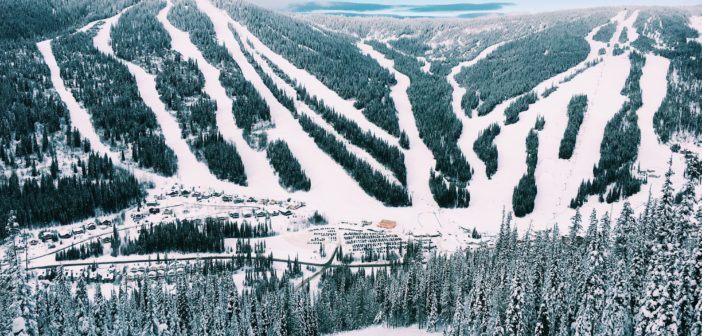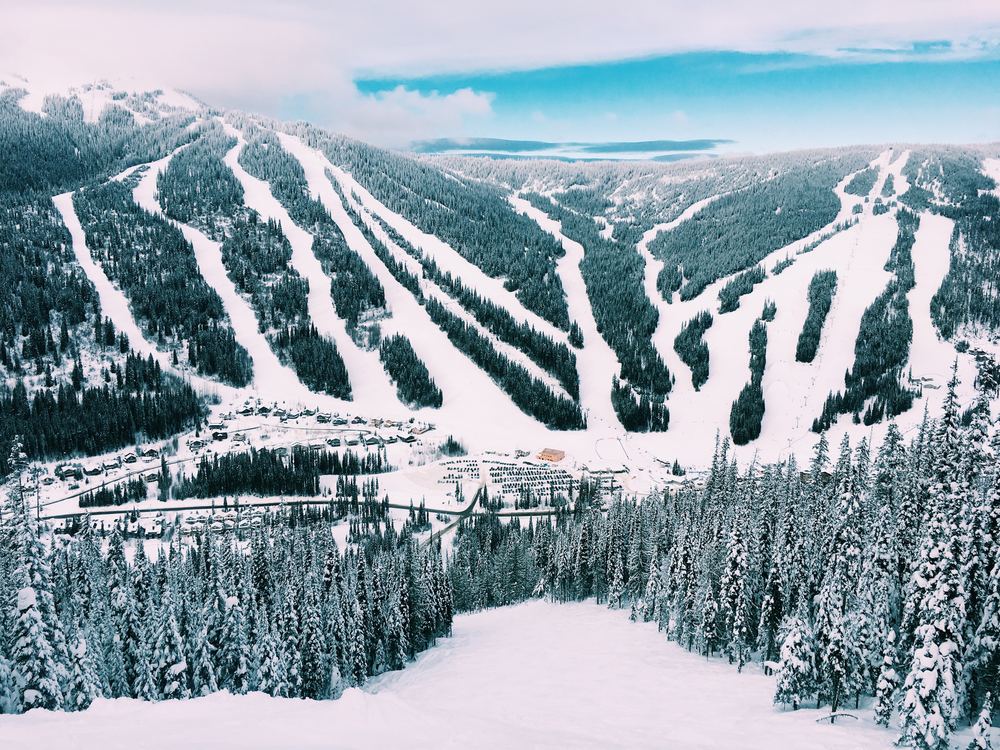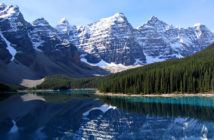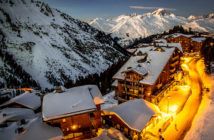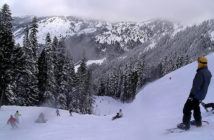When winter hits and the first snowflakes begin to fall, it can only mean one thing—extreme winter sports are finally in season again! Most people deem winter to be an annoyance or even a hazard, but not you!
Lots of snow means the chance to shred some fresh powder at your favorite ski resort. Before you rush off to tackle that double black diamond slope you’ve been itching to ride down, however, take a moment to consider just how amazing it is that ski resorts exist at all.
The sheer amount of snow that appears to fall specifically in that area for you and hundreds of other thrill seekers seems a bit odd, right? Just how did the creators of the resort get that much powder?
Even more puzzling – how could a ski resort even be carved out of a mountain in the first place? You might find yourself wondering things like “What is snow anyway?” and “How is snow made?”
You’d be surprised how much work and effort it takes to mold a nearby mountain into the thrilling haven of powder that is a typical ski resort.
Let’s take a look at what makes snow form and how ski resorts are carefully crafted straight from the steepest mountains and hills.
Contents
What Are Ski Resorts?
Ski resorts are basically fresh mountain areas you can ski or snowboard. Crucially, they also provide visitors with warm, comfortable lodgings where you can rest at the end of the day.
Many resorts offer slopes for skiers and snowboarders of all skill levels.
How is Snow Formed?
The Right Conditions
Warm, moist air rising from the Earth’s surface towards the colder layers of the atmosphere creates the perfect snowstorm conditions.
This can occur organically, through warm air cooling as it climbs up a mountain slope. It can also happen because of “lake-effect snow”, which is when dry, cold air moves over a lake and pushes the warmer water vapor hovering over it up into the atmosphere.
This collision forces the warm air to push the cold air under it, which then creates a cloud. The warmer air contains water vapor within it, which then turns back into liquid water through a process known as condensation.
These water droplets need to condense around tiny, solid particles like soot, pollen, dust, or dirt in the atmosphere. They are then carried around in that cloud.
The Right Temperature
Snow first forms when the temperature is just cold enough to allow tiny ice crystals to form around these bits of dirt and dust floating in the air.
They then collide and stick to one another, slowly but surely growing until they collectively form a unique snowflake of their own.
Contrary to popular belief, it doesn’t have to be extremely freezing outside for snow to begin to fall. The conditions for snowfall are relatively cold, but not totally unbearable – which is why even warm climates can occasionally experience snow.
Snow begins to fall at a crisp 0 degree Celsius (or 32 degrees Fahrenheit), and the heaviest snowfall tends to tumble down when the air temperature is somewhere between 0 to 2 degrees Celsius (or 32 to 35.6 degrees Fahrenheit).
Different Kinds of Snow
When the temperature starts to go above 2 degrees Celsius (or 35.6 degrees Fahrenheit), then the snowflakes melt a little and fall as sleet instead.
Sleet is basically a form of rain that transforms into smaller ice pellets just before it hits the ground.
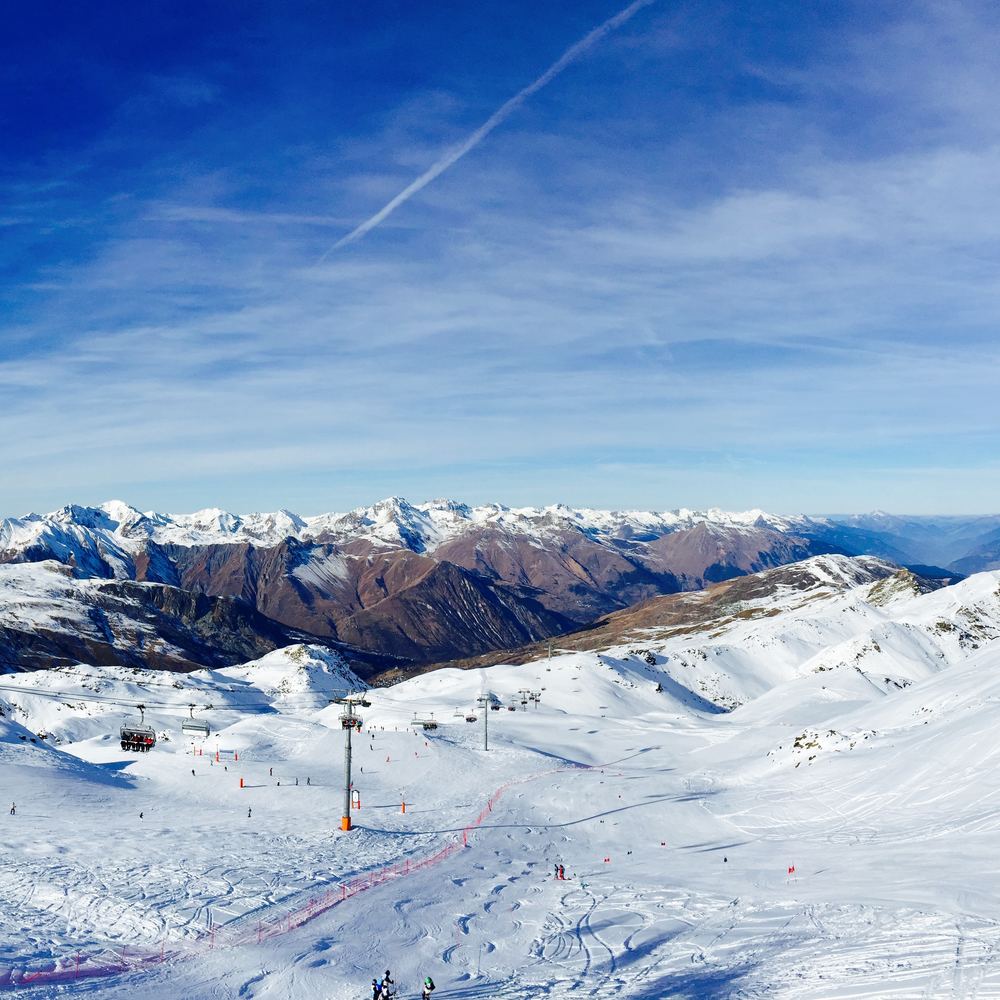
It is often confused with hail, which is when ice pellets rain down from the sky, due to their similar appearance. The main difference between the two lies in when exactly the water freezes.
Go any warmer than this, and then snow, sleet, or hail becomes regular rain.
Snowflake Shape
Snowflakes can form in any hexagonal-type shape, due to their structures being built out of various stars, prisms, and hexagonal plates that the crystals grow into.
Each tiny combination of patterns, however, is completely unique from another snowflake’s pattern.
Snowflake Size
The size of a snowflake tends to vary as well. Its size depends on how many ice crystals have collided with one another in the air and become stuck together.
How many of these ice crystals actually stick together? That’s determined by the surrounding temperature.
If it is a little warmer than 0 degree Celsius (or 32 degrees Fahrenheit), then the snowflakes’ edges will melt a bit and stick together more efficiently, making them bigger and denser.
However, when the air becomes dry and cool, snowflakes tend to form simpler structures, which don’t stick together that well.
This creates the perfect, light powdery snow that skiers and snowboarders love to slide down. The drier and cooler the air is, the better powder you’ll get at the resort.
How Are Ski Resorts Created?
The idea of carving anything out of a mountaintop sounds impractical – and, frankly, a little insane. After all, mountains supposed to be these huge, immovable rocks that are far larger than even most skyscrapers.
Still, that didn’t stop a select few people from trying; Mount Rushmore and the construction of the Transcontinental Railroad are a few famous structures that come to mind.
The sheer amount of work and planning it takes to carve a single ski resort out of an entire mountain range should be praised and heralded.
However, not many skiers and snowboarders would give the mountains they are shredding another look. If anything, we take all that innovation for granted.
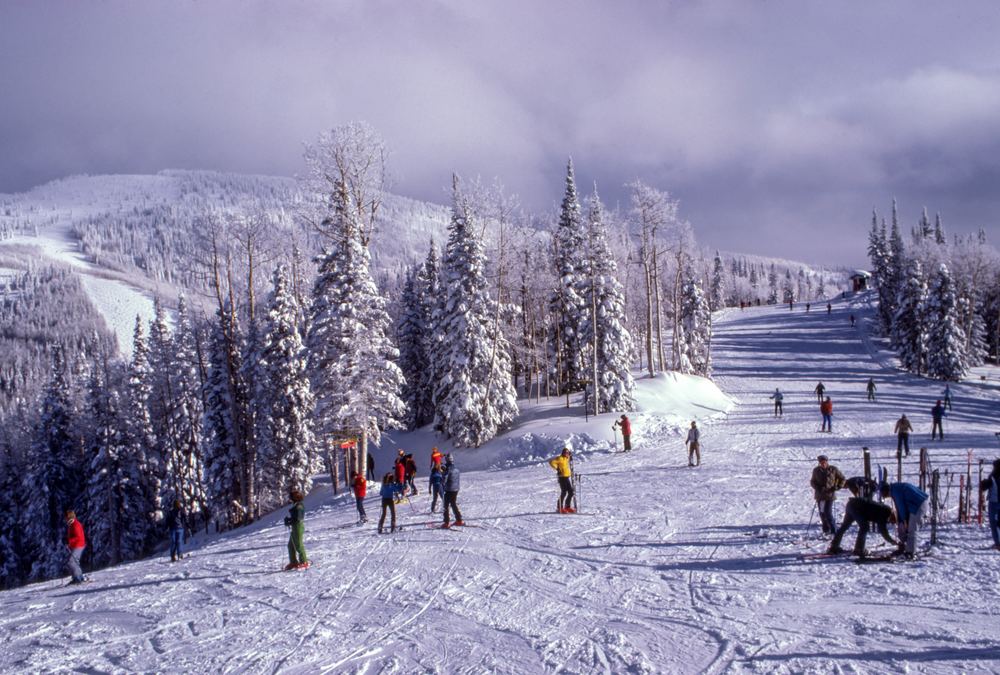
Shaping a mountain range to suit the ideal ski resort conditions for winter sports’ fans everywhere often requires crews of people to rearrange miles of soil, rock, and vegetation.
They also need to take the needs of future ski resorts, future residents, and the surrounding ecosystems that already inhabit those mountains into account when planning it all out.
As you can probably imagine, designing an entire ski run takes a lot of time, effort, and buckets of money. The designing process alone can cost well over 1 million dollars —and that’s before any sort of construction work even begins!
This video goes into more detail on what makes snow form at a ski resort.
How to Design a Ski Resort
Mapping Out the Natural Terrain
Before anyone can even think of carving a simple ski resort from a mountain range, one needs to carefully map out the terrain they intend to reshape.
Many slope designers start from the highest peaks, using the most accurate satellites in their arsenal to head up to 28,000 kilometers (or 10,800 miles) worth of mountain range. The accuracy of the images they receive is critical to the success of mapping out a potential resort site.
They often spend a lot of money to ensure that their satellites can map out even the smallest of contour intervals, so they can calculate solar radiation levels for each part of the terrain.
This ensures they find the areas with just the right kind of slopes and exposure to the elements, which produce the most perfect, dry powder any good ski resort needs.
After finally mapping out the stretches and slopes they believe will have the best snow conditions, the ski resort designers must then narrow their selection down to runs that are actually skiable.
They may find that some slopes are too steep or too flat to properly ski on, while others might have streams, enormous rock piles, heavy vegetation, or other obstacles that cannot be easily moved.
The remaining slopes are then color-coded based on the appropriate ski levels, and one last run-through will be done to ensure that the resort is a perfect mix of steep slopes and slightly flatter runs for novice skiers.
The slopes they eventually select must also connect to one another and converge on a common point where the ski lifts can be installed.
Ground Work
Satellite images are not the only tools slope designers use when planning out a ski resort. They often have to explore the terrain for themselves on foot or by riding on snowmobiles or helicopters.
They work throughout the summer and even the winter seasons just to make sure they have a good grasp of the terrain they are about to rework.
This exploration can quickly turn dangerous if the designers aren’t careful. The terrain isn’t as groomed as it would be when the resort is finished.
The snow can be much looser, and avalanches might clamor down the mountainside at the slightest provocation.
After about six months or so of collecting important data and drawing up maps, the crews then get to work on building the slopes. The construction can take many years before a ski resort can even open to the public.
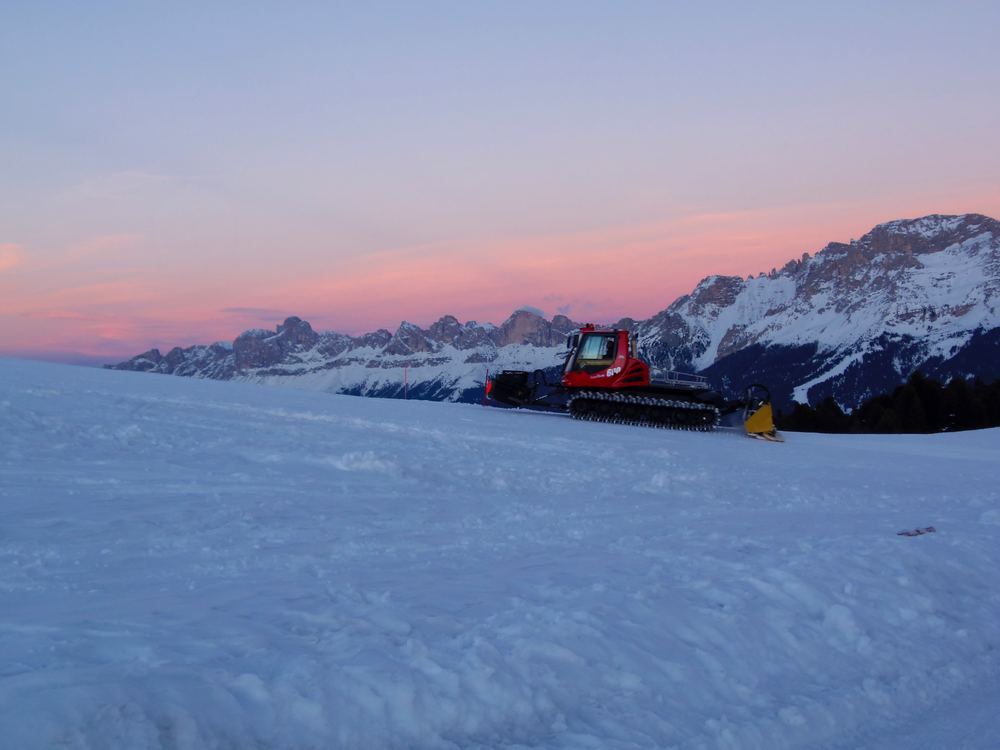
How Groomers are Created and Maintained
The groomers that ski resorts employ are gigantic beasts of machines that flatten out the snow, so that you have freshly packed powder to ski or snowboard down the next day.
They are sometimes referred to as “snowcats” or “tillers.” Modern groomers utilize front-mounted, hydraulically-operated shovels and blades, powered rotary tillers or rollers, and other specialized shaping equipment to maintain various ski slopes.
They’re also used to build new half pipes, ski and snowboard terrain parks, and snow tube parks. Finally, they have a climate-controlled cab where the driver can comfortably sit, tracks made of rubber and metal, and a diesel engine.
How Do Groomers Work?
In order to get the snow ready for eager skiers and snowboarders in the morning, the groomer simply pushes the snow ahead of it and smooths it all back out again. The back of the groomer has a tiller that first churns the snow, then presses it back into a corduroy pattern.
They can handle even very steep slopes due to their low center of gravity and large contact area. If the groomer needs any help, they can also use winches to support them as they continue to smooth out slopes.
Usually, however, most ski resorts employ the use of winch cats, which are specially designed to smooth out even the steepest of a resort’s slopes.
Both normal groomers and winch cats attach the cable of their winch to a post at the top of a ski slope or to the ski lift. They then use that winch to lower or raise themselves on a slope for grooming as they see fit.
Groomers can also be used for agricultural purposes, moving bulk goods, and working on peat bogs or at biogas sites. This is a credit to their range of mobility and low ground pressure.
When Do Groomers Smooth Out the Snow?
These groomers often work right after the ski lifts shut down to the public, which means a lot of late-night shifts.
Hours can be rough. Most workers have to groom 14 to 15 hours each night over two work shifts to get the resort ready for potential customers.
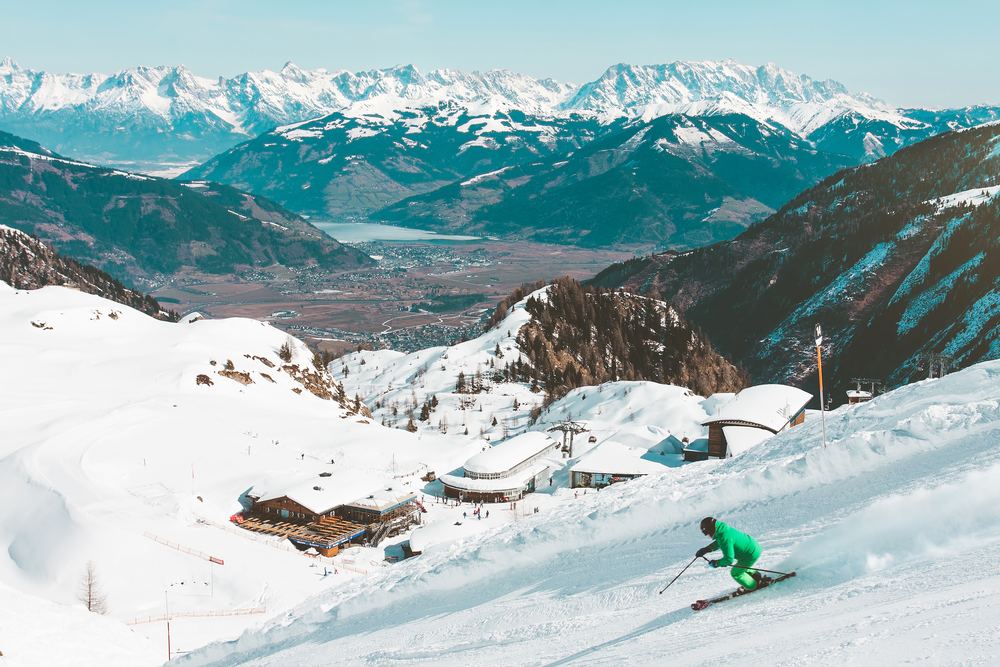
Resorts that offer night skiing crunch down this time even further. Groomers will have to work fast between the closing times of night skiing and the opening times of the next morning.
On the rare occasion that any groomers are sent out during the day, they usually warn skiers and snowboarders with visual or acoustic signals they have on hand to stay out of their way.
How Much Does a Groomer Cost?
The starting cost of your typical groomer sits at approximately $300,000 a piece, and the maintenance expenses that come with it can stack up pretty high, too.
Groomers cost roughly $100 an hour to operate due to driver payments, gas, and a slew of other expenses.
This video goes into more detail on how ski resorts are made.
Conclusion
Winter sports’ fans will always love hitting their favorite slopes when the urge arises, but they often do not slow down enough to marvel at the fact that ski resorts even exist at all.
Carving out an entire ski resort from a huge mountain takes just as much guts and determination as any seasoned skier or snowboarder has—and then some.
Now that you have some idea of how they’re created and how snow is made, hopefully, you won’t have questions like “How does snow form?” or “How are ski resorts made?” distracting you from gliding down those wonderful, powdery slopes.
Have you ever wondered what makes snow form at ski resorts?

